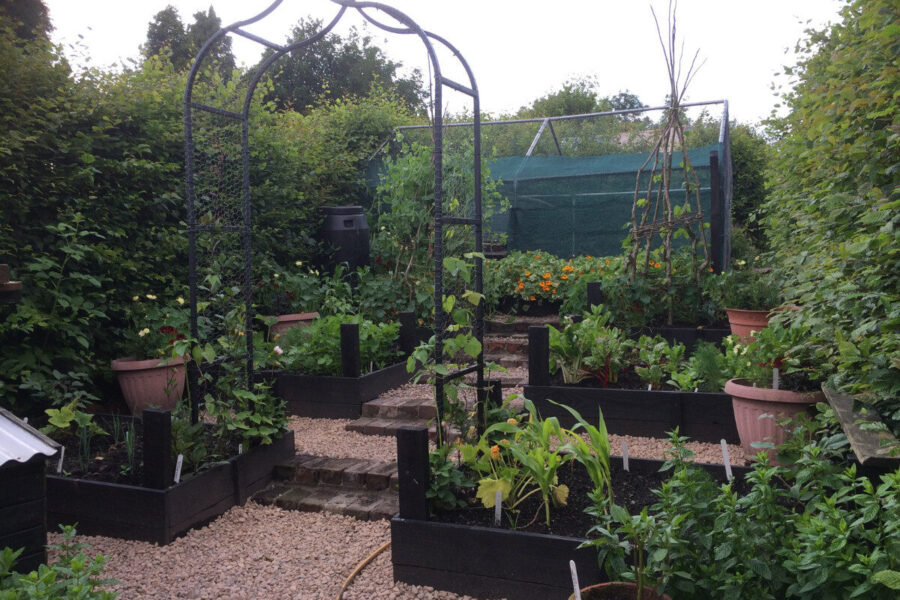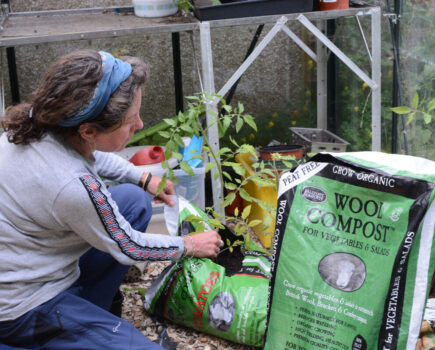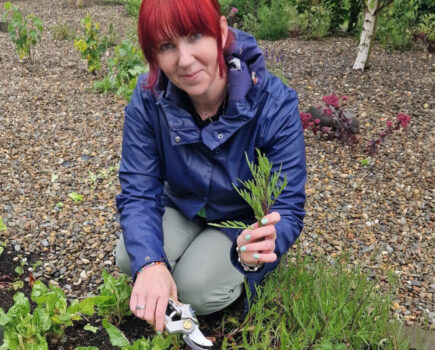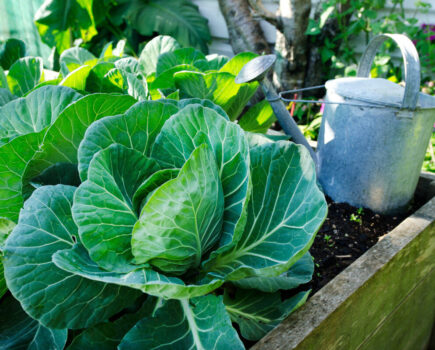Andrew Oldham is busy feeding, weeding, sowing, and making a simple wormery
A potager by any other name is an ornamental kitchen garden. Unlike an allotment or dedicated vegetable garden, a potager is often smaller and blends flowers with vegetables. Its structure tends to be formal, with symmetrical paths, beds and low hedging that is reminiscent of a Tudor knot garden. However, with the rise of box blight, and less garden space in new-build houses, the low hedge has been replaced by the raised bed to create a sense of balance within these mixed planted spaces.
My potager is one of the few gardens I have sat down and planned on paper. Mapping out room for six raised beds, 1.5m x 90cm (5 x 3ft), that would be built on a sloping hill, covering an area of 6 x 6m (20 x 20ft) including hornbeam hedges to the west and east and gravel paths in-between. The beds, along with some brick steps, would have the added benefit of masking the rise from the cottage garden to the chicken run, and stop any soil slip. My plan blended marigolds, nasturtiums, climbing beans and peas beside parsnips, lettuce, chard, kale, turnips, leeks and carrots. Every time I harvested a summer crop, I would add a handful of blood, fish and bone, before replanting winter edibles. My aim being to have a near continuous harvest of vegetables tucked between the flowers, some of which were also edible.
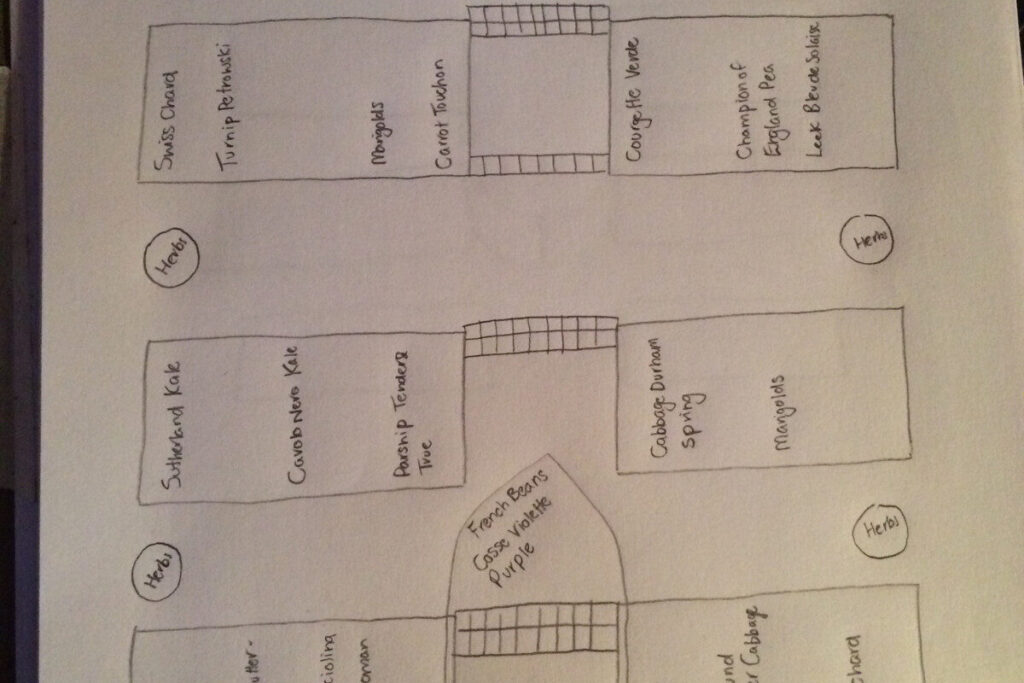
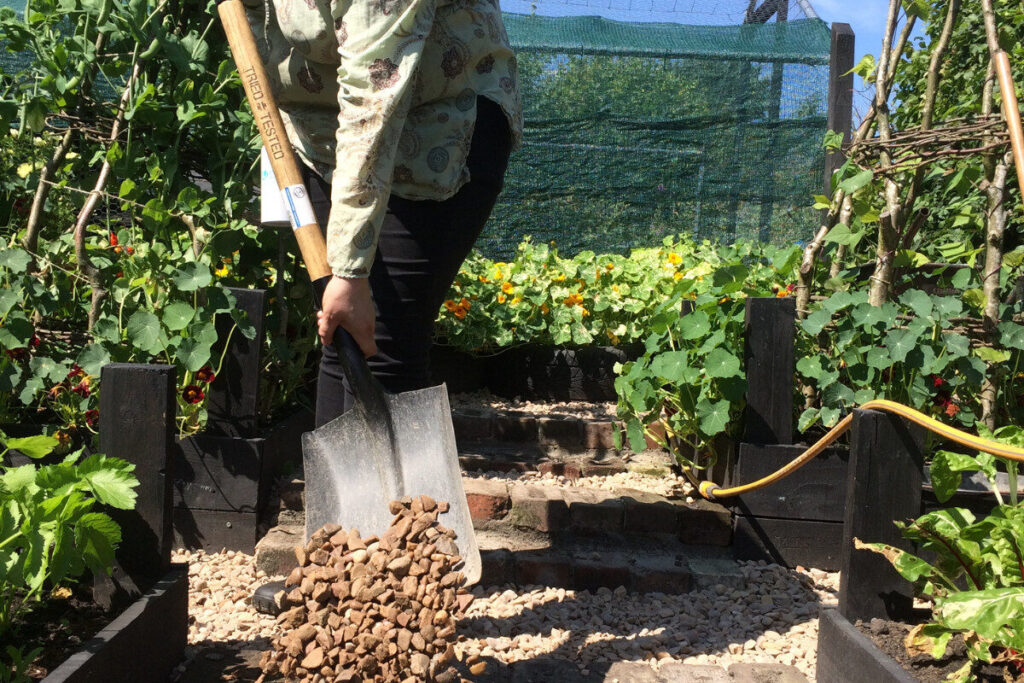
…………
Quick nasturtium recipe
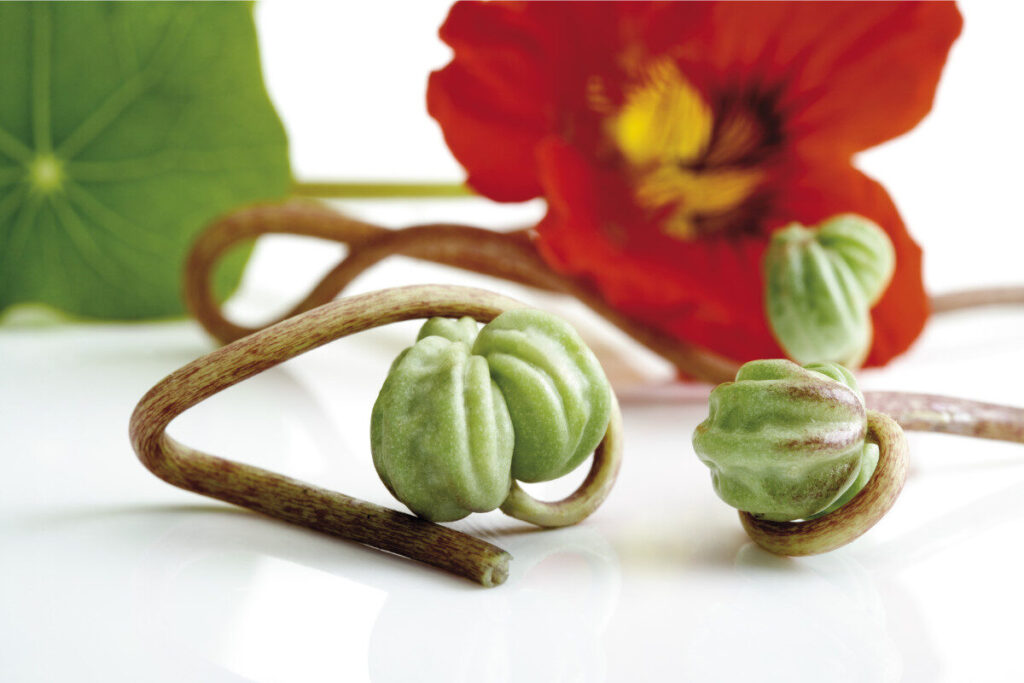
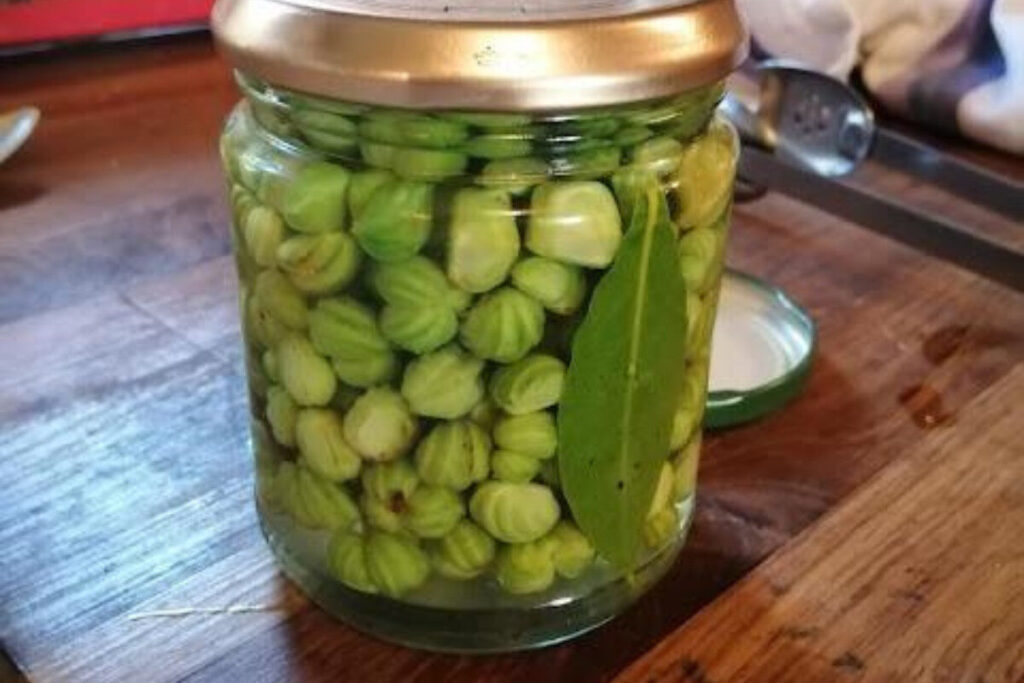
The nasturtium is overlooked as a harvest but the flowers, leaves and even the seed pods are edible. I turn the seed pods into poor man’s capers with a very simple recipe: 1 jar of nasturtium seeds, ⅔ cup of water, ⅔ cup of cider vinegar, 2 tablespoons of sea salt, 1 teaspoon of sugar and a bay leaf.
Heat the water, vinegar, salt and sugar together, but do not boil. Sterilise a jar in a microwave or warm oven, then wash the nasturtium seeds. Place them in the sterilised jar with the bay leaf and pour over the heated liquid. Screw on the lid and leave for two weeks. Store the seeds in a fridge and eat within three months. They are great on sandwiches and in salads.
………….
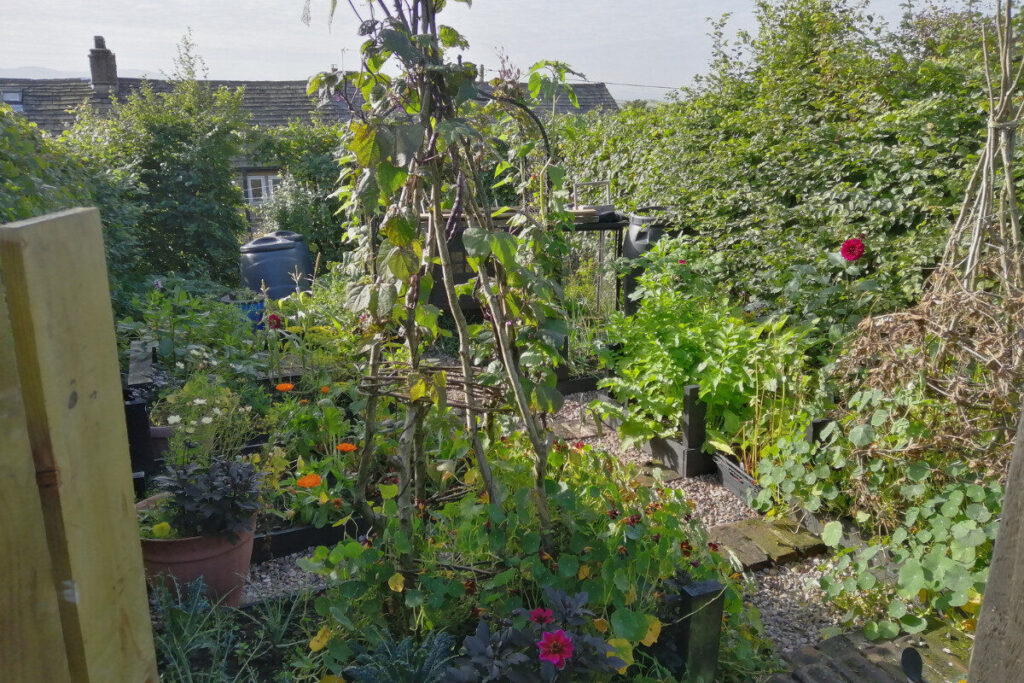
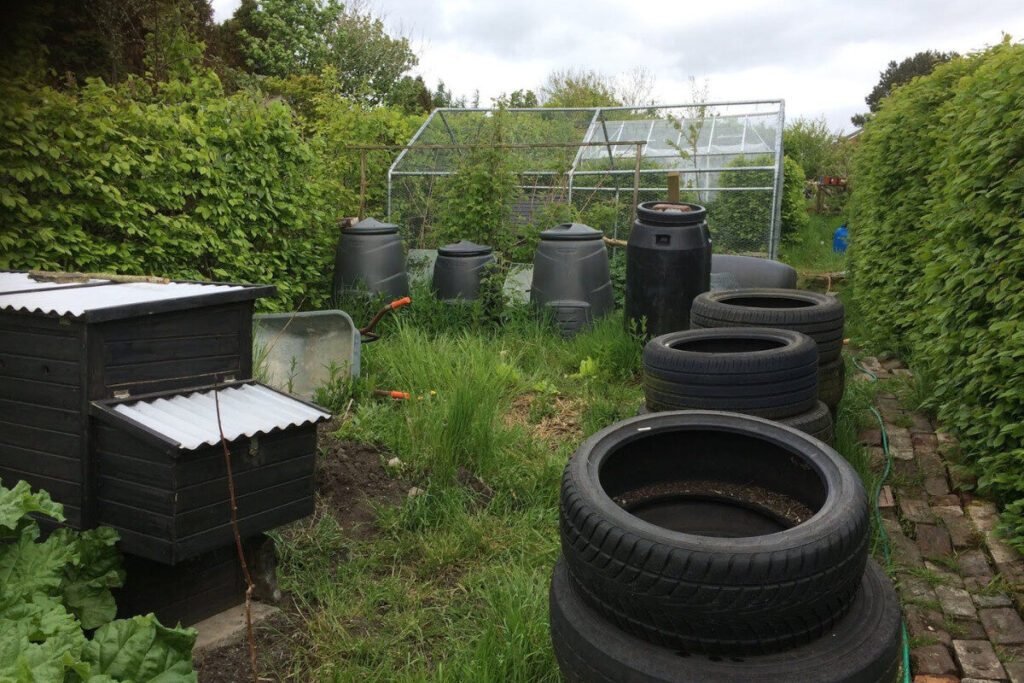
My raised beds have elongated posts at each corner, which stand around 45cm (18in) high. This allows me to use a hose safely as it catches on the posts and is not dragged across the beds, damaging the plants. These posts also make beds easier to net, to keep off the pesky pigeons or even the cabbage white butterflies. I painted the beds black because this colour heats up quickly in sunny weather, which means direct sowings could be done earlier. I used an old pane of glass, supported on the corner posts, to create cloches that protected those early seedlings as needed. The paths were gravel as this material helps protect against slugs and snails and can also further soak up heat during the day.
In this little oasis I planted rosemary, oregano and fennel at the end of each crossing path and nasturtiums at the end of the main path. There is also a single arch as you come into the potager, which I planted with ‘Cosse Violette’, a climbing French bean with a purple flower and glorious purple-podded beans. You could choose to have a climbing rose instead because that is the great thing about a potager; you can experiment with vegetables and flowers that are pleasing to look at as well as eat.
……………
Jobs for the fortnight
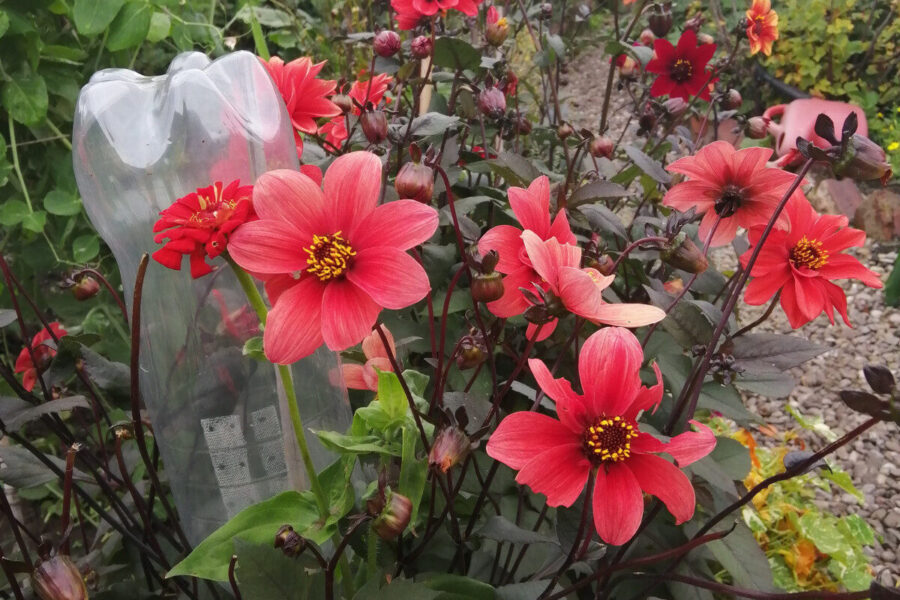
1. Give dahlias a liquid feed as they are hungry feeders. Keep deadheading and apply a seaweed feed weekly for blooms throughout summer and early autumn.
2. Hoe and hand-weed borders often. Choose a sunny day for hoeing. Using a sharp hoe, slice of the annual weeds just below the surface and leave to shrivel up on the soil and rot away. Perennial weeds will come out of the ground easily after a downpour as the soil is looser and a strong garden fork will pull up all the roots.
3. Water and feed sweet peas regularly. Apply a high potassium feed for flowers, such as a tomato feed. Pick the flowers every few days and remove seed pods to prolong flowering. If you want to collect your own seed, leave the pods but remember the flowering will stop.
4. Cut back early summer perennials such as hardy geraniums. Use a pair of hedge shears, snip them back down to ground level. Compost the old foliage and new foliage and flowers will grow within weeks to give you a second flush.
5. Sow biennials like foxgloves and sweet rocket (Hesperis matronalis). In a seed tray, sow the seed thinly. As true leaves appear, prick out into cell trays. When the plant is large enough, plant out into borders.
6. Feed and deadhead roses to keep them flowering. Use a manure tea to feed the roses. Make this by placing manure in an old pillow case and submerging it in a water butt. Use after a week.

……………………..
Future thinking – plants for free

Shrubs are vital in our ecosystem but they don’t have to cost a fortune. This month take softwood cuttings from hydrangeas, forsythias and weigelas.
Choose fresh growth and cut just below a couple of leaves. The cuttings should be 15cm (6in). Strip away lower leaves and leave only three to four leaves at the top of the cutting.
Cut just below a leaf node, dip in hormone rooting powder and, using a dibber, make a deep hole in a pot full of 50:50 compost and grit.
Slide the cutting into the dibber hole and firm it in gently. Water and place a clear plastic bag over the pot. A pot can take up to four cuttings.
Store somewhere warm and out of direct sunlight. Watch for new growth and pot on when roots appear out of the bottom of the pot.
……………
Andrew Oldham is a self-sufficient(ish) gardener who believes in the joy of down-to-earth growing and cooking. He lives high on the Saddleworth hills with his family at Pig Row. Find him on all social media platforms as @lifeonpigrow
Find more tips, advice and articles like this at the Amateur Gardening website. Subscribe to Amateur Gardening magazine now

